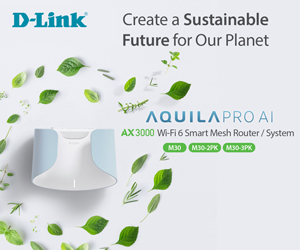5G Fact and Fiction. What is it? What does it do that 4G can’t? Can I get it? What are the health implications? Does it cost more? Is it just a tool to get us to buy 5G phones and pay more for data?
There are hundreds of questions to answer, but we have distilled them to those above. Before you read on, know that Charlie Brown and CyberShack TV, Life and Technology Radio and this website have provided impartial advice for over 20 years.
Respected and senior Journalist Ray Shaw researched this guide, and we hope it addresses your needs. Sorry if it appears a little Telstra bashing (because it is). Since day one, Telstra has been at the forefront of 5G marketing hype (we use a less pleasant name). Please use the comments facility at the end to ask more questions.

What is 5G?
Easy – it is the next generation of 4G. In fact, the vastly inferior sub-6GHZ and low band 5G inflicted on Australia use 4G towers and backhaul infrastructure (called NSA – non-standalone).
5G means that by mid-2024, 3G networks will close, and the bandwidth will be ‘repurposed’ for low-band 5G. This means it uses the 3G signal to transmit 5G. It provides a far longer reach but at similar download speeds to 3/4G.

The real 5G that had Telstra promising 20Gbps downloads is mmWave or High Band using the 26GHz frequency. 5G mmWave has very short transmission distances. Telstra intends to use that for commercial applications rather than for consumers. At this stage, all 5G phones support sub-6GHz and low band. The vast majority do not have mmWave, yet Telstra persists in spreading the mmWave 5G myth.


What does it do that 4G can’t?
It is a little faster over shorter distances than 4G. Like 4G, it is purely digital, unlike 3G, which is analogue. In fact, when you made a 4G call, you needed VoLTE (Voice over LTE) enabled phones, or the call would be routed over 3G.
Technically 5G has lower latency, higher call capacity, and more bandwidth than 4G. Don’t be fooled. 5G will kill 4G, just as when 4K TVs killed off 1080p (1K) TVs as the price became the same.
There are no killer Apps yet, but the more efficient 5G can help with things like telemedicine (if you have signal coverage).
Can I get it?
If you live in a major city or on a primary transport route, maybe. Telstra has been perpetuating the myth that it covers 80% of Australia’s population in over 400 cities. The reality is that it is not a large geographical area. As the US FCC (Federal Communications Commission said, ‘Carrier 5G Maps are rubbish’. Why? Because they are based on the theoretical, not actual coverage. Compare Telstra Maps with user-generated nperf maps.
If we zoom in on Sydney, you can see the Purple starts to break up, and the 5G coverage has vast gaps. Telstra maps (left) and nperf (right).




What are the health implications?
The US FCC, FDA, World Health Organisation, and the Australian Department of Health and Aged Care, among many more, have declared 5G (sub-6GHz and mWave) clear of health hazards.
We take our duty seriously to protect the public from any potential harm due to RF exposure. Indeed, as noted in the inquiry, our limits for devices held close to the body are more restrictive than other recently published international limits. Said arguments for tightening or loosening limits tended not to be science-based.
FCC spokesperson
You need to know that 5G uses a lower frequency than microwaves, radar, and even sunlight which are at a far higher frequency.

Yet countless websites and social media persist in showing piles of dead birds near 5G towers (later debunked as a staged photo), inferences that it causes male infertility, cancer, headaches, sleep disturbances, fatigue, and more.

CyberShack’s’ take: 5G is safe based on comprehensive scientific testing. We use 5G more than most and you will be the first to know if we grow two heads.
Does 5G cost more?
5G should use about the same as 4G data but can take less time to download. But Opensignal user research indicates that 5G users consume at least 1.7 to 2.7 times more data than 4G users. It also shows that faster downloads lead to more higher-resolution (FHD instead of HD) and data-hungry media consumption.
Until recently, Telstra had a $15 monthly premium for 5G use – that went over like a lead spy balloon. It now has a $58/40GB (price increase in July), providing 250Mbps capped speeds (if you can get that). Uncapped speed plans are $68/180GB and $89/300GB.
But the reality is that you rarely use 5G (unless you live and work on top of a 5G-enabled tower), so you are paying far more for data than comparable 4G plans. Our advice – stick to the 4G plan that suits you. Read How to save money on mobile phone bills (guide).
Is it just a tool to get us to buy 5G phones and pay more for data?
When Telstra first introduced it in 2019, it was definitely part of the strategy to get users to upgrade to 5G and spend more on a handset and mobile plans.
At that time, Aussie researcher Telsyte predicted that by the end of 2022, 5G handsets would cost the same as comparable 4G handsets. They were right. 4G now has 17 models/variants from six manufacturers ranging in price from $138 to $399. 5G has 168 models/variants from seven manufacturers ranging in price from $244 to $2999.
Read: Best Android phones 2022 – $200 to $2000 (guide January 2023 update)
But you can switch 5G off on any phone if you don’t want to use it and don’t have a 5G mobile data plan. Readers tell us they get better battery life and more reliable calls when limited to 4G or less.

CyberShack’s view – 5G Fact or Fiction is now mostly fact
5G has our support as the logical successor to 3G and 4G. We have always seen it as good tech progress. Our main beef was the marketing BS that Telstra spread about it until quite recently.
There are no announcements about 4G network closure because eventually, 4G will be repurposed to 5G Low Band, as eventually 5G will be superseded by 6G and 7G. The fear, uncertainty, and doubt (FUD) will start again.
5G fact and fiction, 5G fact and fiction, 5G fact and fiction








4 comments
Trevor Miller
Another uninformed “article” as clearly there is a major difference in both much higher speed and super low latency with the upgrade from 4G to 5G… while not everyone will need or want that, the facts still remain its a major change and improvement in Telecommunications and in many ways Australia and Telstra are the leaders.
As 3G networks are shut this year the spectrum can be re-purposed for 5G, and tests have shown range of over 100km on 5G.
It would be great if you actually created informed and independent articles rather then this strange Telstra bashing dressed up as information – do better.
Ray Shaw
The article is factual and fully independently fact-checked – you just appear to have a different slant on the facts. Low-band 5G is not 5G but 3G in 5G clothing. It uses 3G carrier bands to cover the same distance as 3G but at far lower speeds. At 100km you would be lucky to get 5-10Mbps download. I am happy to include any updated information you may have – email to [email protected].
Richard Cleveland Cleveland
Fantastic summary thank you. It all sounds very complicated with all the technical phrases. No matter what the explanations reveal to the user we will still have to comply?!
Ray Shaw
Like death and taxes, it is inevitable.